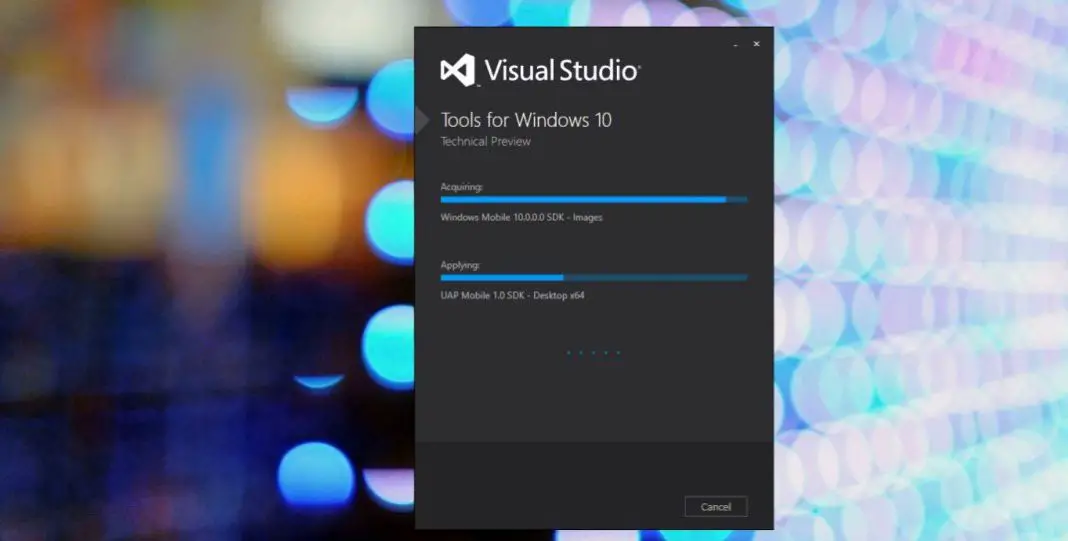Microsoft today officially released .NET Core 2.0 and Visual Studio 2017 15.3. The company also released Visual Studio for Mac version 7.1. The .NET Core 2.0 focuses on performance improvements and expanding the set of APIs available via .NET Standard 2.0. It includes the runtime and libraries for .NET Core as well as the tools for building, debugging and running .NET Core applications. There are some notable changes from .NET Core 1.1.
For Visual Studio 2017 version 15.3, the software giant focused on improving accessibility, particularly using Visual Studio with the most popular screen readers. The company made over 1,700 improvements.
Microsoft .NET Core 2.0 Features
Live Unit Testing – You can use Live Unit Testing for .NET Standard, .NET Core, and ASP.NET Core projects. (Visual Studio Enterprise SKU only)
References – You can now refer to .NET Core/.NET Standard libraries from .NET Framework projects and vice versa. No need to manually add interop NuGet packages – Visual Studio does this for you automatically.
Containers with .NET Core and Windows Nano – Support for containerizing ASP.NET Core apps as Windows Nano images has been added and you can now select Nano as the container platform. You can do this under File->New Project for ASP.NET Core projects. For your existing projects, it can be added using the Project Context Menu
Support in Visual Studio for Mac – VS for Mac supports building .NET Core 2.0 applications, including libraries, console apps, as well as web applications and services with ASP.NET Core.
Visual Studio 2017 version 15.3
Visual Studio 2017 version 15.3 brings improvements and fixes for the following.
- Debugging is much more accessible. Debugger windows like the Call Stack, Locals, Autos, and Watch windows were inaccessible to screen readers. That’s now fixed.
- The VS editor’s text adornments let developers know about features available at particular points on a line of code, such as breakpoints, lightbulbs, and error and warning “squiggles.” Customers can now discover and navigate between these adornments via the new “Show Line Annotations” command set, which you can find on the editor context menu.
In addition, there are fixes for reliability issues to improve performance, many of which you reported through report-a-problem.
- A crash that could occur in C# and VB projects when editing linked files, files in Shared Projects, or files used in projects targeting multiple runtimes.
- A race condition when debugging C# or VB projects that could cause Visual Studio to crash when ending the debugging session.
- A crash in C# or VB projects when malformed metadata is encountered in the code file.
- A crash that could occur when compiling a local function in C#.
Other Visual Studio 2017 version 15.3 improvements:
- Azure Functions Support. The new 15.3 version of Visual Studio has added the tools for developing C# Azure Functions to the “Azure development” workload. The main feature change is that this update enables you to create pre-compiled C# Azure Functions, which start faster than script-based functions.
- Broad Azure sign-in support. VS 2017 15.3 also supports logging into not just Azure, but Azure Government and Sovereign cloud offerings, and Azure Stack.
- Improved container support. This release now supports the breadth of container development across existing .NET Framework apps with Windows Containers, to .NET Core with Windows, and Linux Support. Recent additions include support for your .NET Core applications in containers running Nano server, as well as debugging improvements for .NET Framework applications in containers.
- Continuous Delivery Tools now included. Visual Studio 2017 version 15.3 moved the Continuous Deliver tools extension into the main product. You can configure continuous delivery for ASP.NET and ASP.NET Core projects targeting Azure App Service. This tooling will configure your continuous integration build using Visual Studio Team Services and configure your deployment to Azure App Service. Once configured, you can modify and extend the build and deploy process, customizing it to meet your exact needs.

